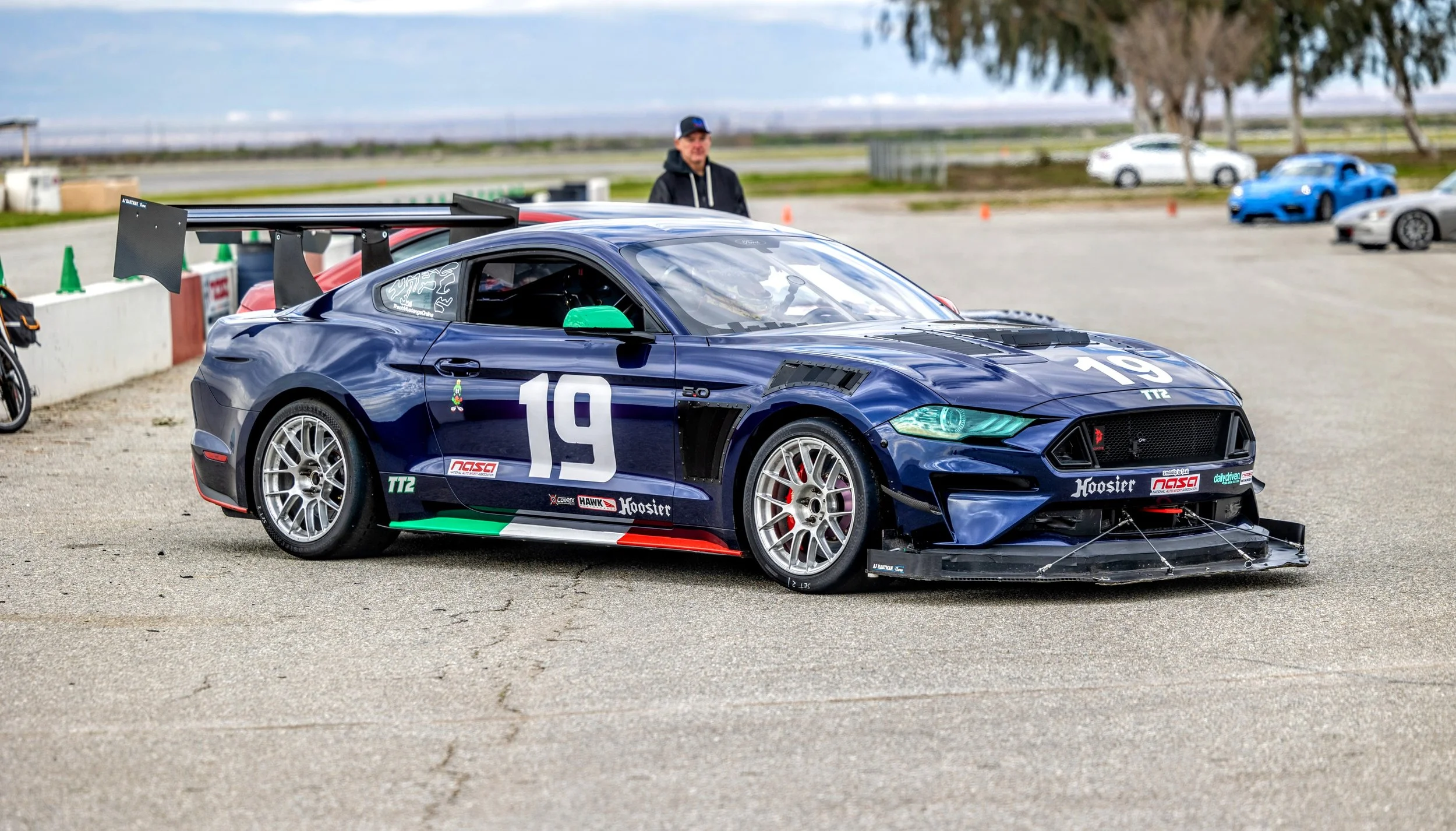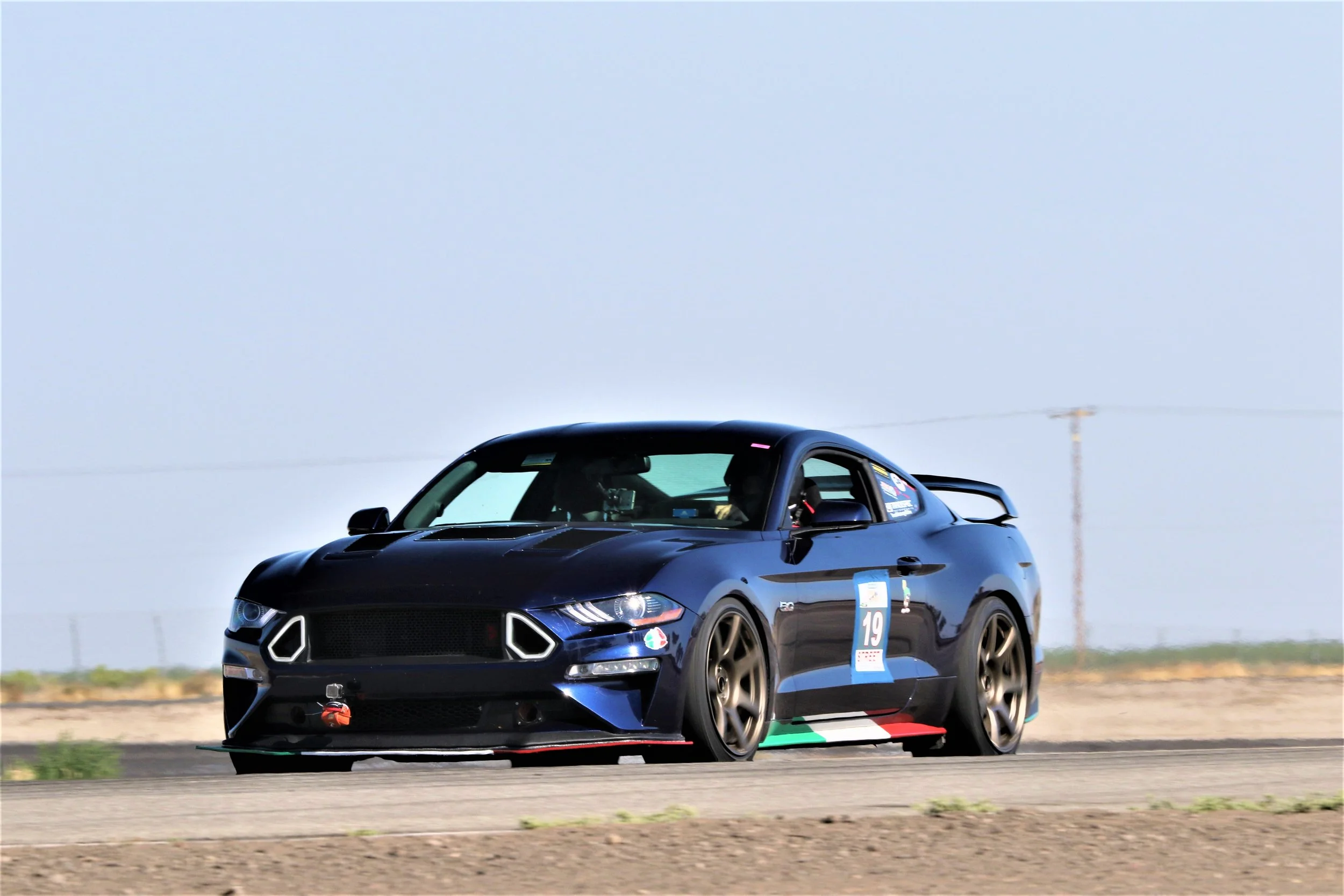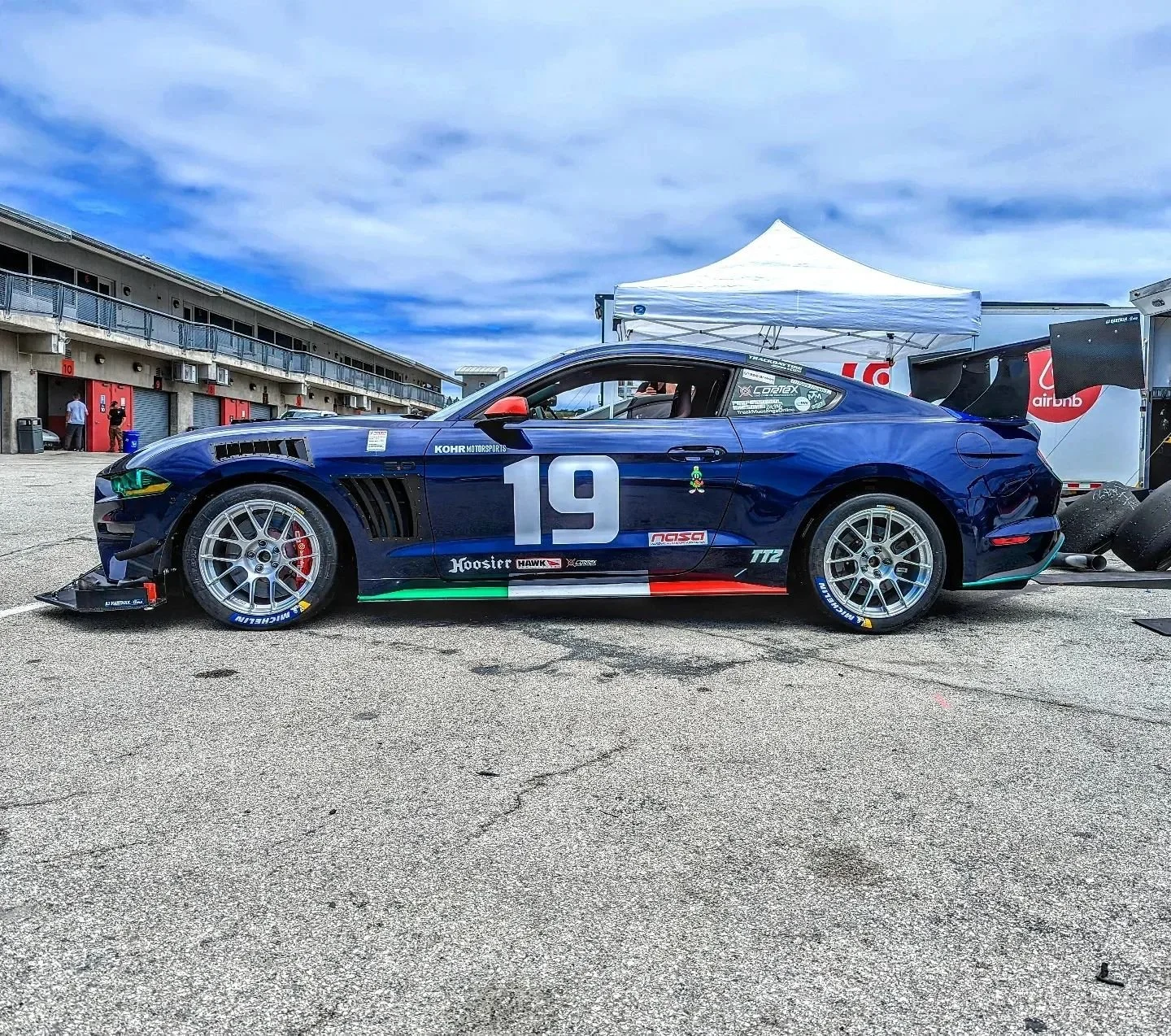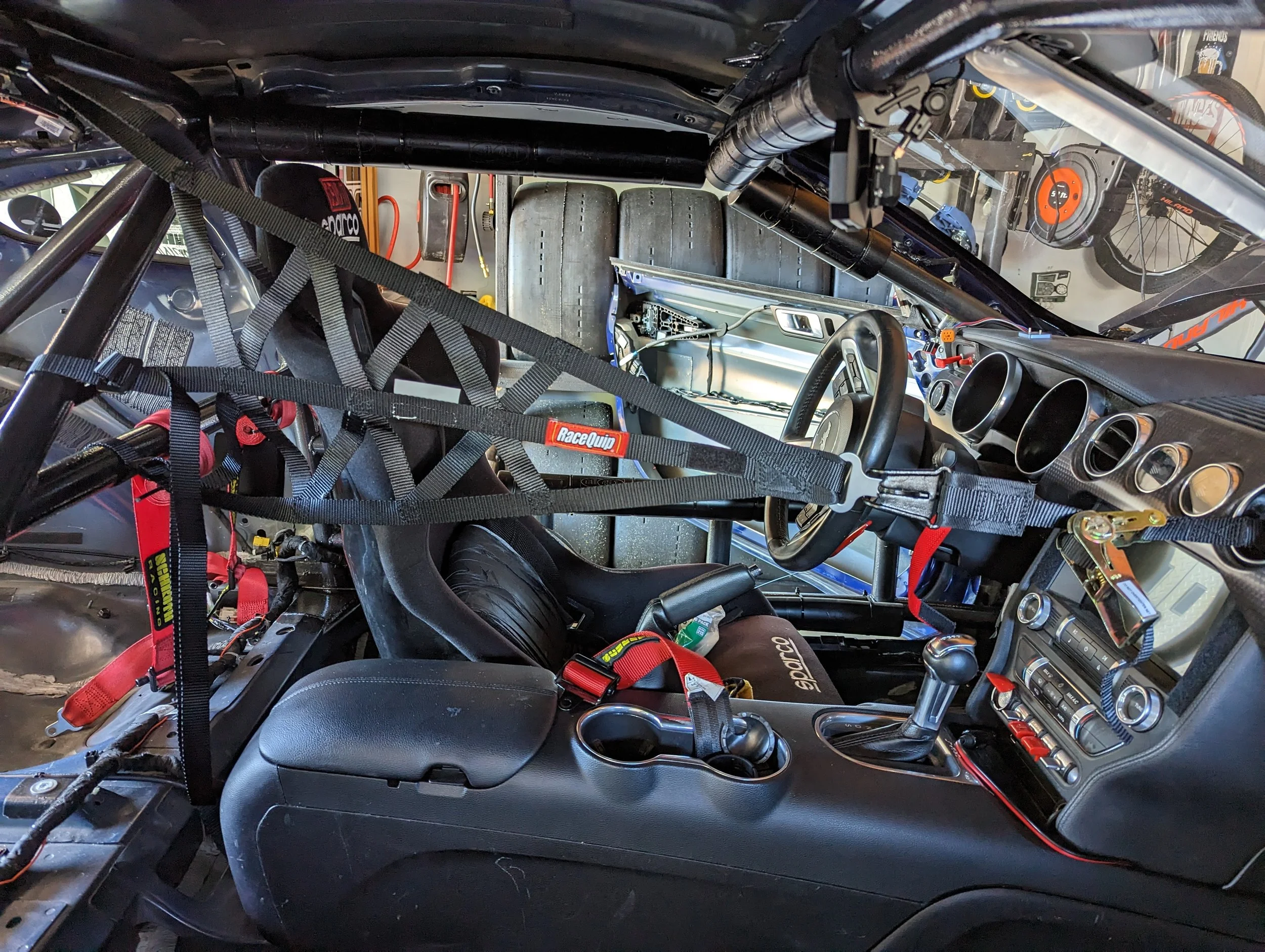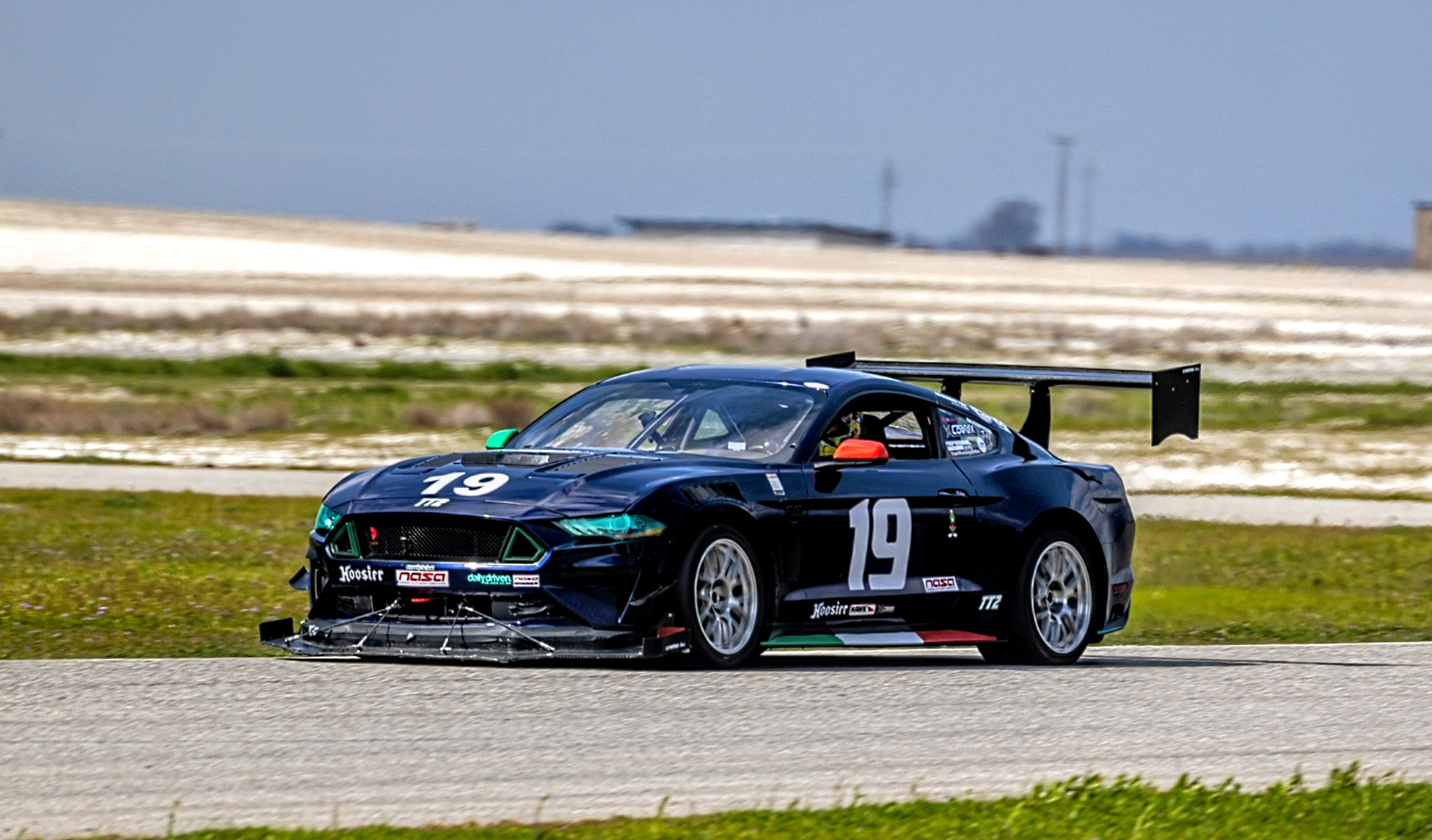Alessandro's Ten-Speed Mustang: Meteoric Rise
It’s funny how often a track car, if it’s a true passion project, complements the personality of its owner. Alessandro Sensoli, a former pro rugby player, was forced to hang up his cleats and find a safer source of excitement after suffering a back injury five years ago. The natural alternative to bashing skulls on the rugby field was destroying brakes and tires on the track.
And to ensure he destroyed the most in terms of consumables, he decided to buy a heavy muscle car. In just four years, this stock S550 went from being heavy, prone to overheating, and nervous at higher speeds to a lightened, stripped, stiffened, and wing-clad car that “inspires total confidence in sixth-gear corners.” Few pony cars on the West Coast can compete.
After a half-hearted attempt at building a Dodge Challenger ended when it was stolen, Alessandro took the opportunity to buy something better suited to the track—but did not stray far from the muscle car formula. His friends suggested he avoid forced induction, so he skipped past the Shelby GT500 and picked up a Mustang GT, but not an ordinary one.
For Alessandro, this 2018 GT’s biggest draw was its ten-speed automatic gearbox. Though it’s proven to be fragile and heavy, the drivetrain helps it out-accelerate much lighter, more focused cars.
Being a heavy car, he couldn’t skimp on rubber. After trying a series of wheels which were never quite perfect, he worked closely with APEX to put together the perfect set for his application. Now, Alessandro wraps his 18×11” APEX EC7-RS wheels on 315-section Hoosier A7s.
Quid pro quo: APEX tested clearances of this new model on this car.
This footprint, plus the Cortex-tuned JRi DA coilovers helped give the car the sense of nimbleness he’d been after, as did a set of DCT70 pads and DOT4 fluid. Ale was astounded by the way this big car belied its weight and stopped so reassuringly for the full session. For a car that once weighed nearly two tons, that’s not bad.
More consecutive hot laps pushed the gearbox to overheat more and more. Alessandro added a Setrab 934 transmission cooler, which helped somewhat, and while he was at it, he added radiator ducting, an aluminum pan, and a water spray system to help the motor run cooler. They didn’t quite make the car Toyota-reliable, but they helped him avoid running into limp mode.
Pushing longer helped him recognize the shortcomings in the suspension setup. The Mustang’s sponginess kept him from getting the sort of responses needed to improve his lap times, so he added a BMR sway bar in front and a stock GT350R sway bar in the rear. The car was reassuring in the slow and medium-speed stuff, but it still needed some help in the fast stuff.
After adding his own splitter, painted like the Tricolore, and an APR 250 rear wing, Alessandro changed realized where the Mustang’s strengths were. The gearbox kept the car accelerating at higher speeds, and the newfound aero grip helped him navigate the quick stuff much more confidently. If he was going to find more speed, it would be in the high-speed sections.
Eager to improve upon the car’s forte, he ordered AJ Hartman front tunnels to flank his splitter. The resulting increase in front downforce altered the aero balance enough to make the car pretty nervous in the sixth-gear corners, so he reached out to AJ Hartman to find a rear wing that would help settle the rear. Their Fulcrum 14 rear biased the car towards a mild understeer, but that’s fine with Alessandro. “I feel comfortable pushing the car in places where you cannot afford to make a big mistake.” Check his commitment through Thunderhill’s Turn 8 in the footage below for evidence:
After increasing the downforce, he had to increase the spring rate, which helped keep the car off the ground, but reduced compliance in the slower sections. To find some needed give, he switched to a Mustang convertible rear swaybar—the tiniest bar he could find. At the front, he has an adjustable Eibach bar, which mitigates the push he felt immediately after adding the rear wing.
The added aerodynamic grip began to test the brakes, so he fortified the factory setup with a set of Girodisc two-piece rotors at all four corners, Counterspace Garage C2 pads, and a little homemade ducting. Brakes no longer limit his performance over a session.
The strength of the powerplant out of the box allowed him to prioritize the aforementioned modifications, but he had to make a few tweaks to the engine eventually. With LTH headers, an OZ tune, and a tank full of E85, he has 474 horsepower to spread across all ten ratios.
While it’s more than enough power for most West Coast tracks, adding power might be the last area where the car could be improved without incurring huge costs. He might add a flat floor or a set of cams for more mid-range, but since the motor’s working so beautifully at the moment, he’s hesitant to open it.
The weight of the car—now 3,700 pounds with 180 pounds of driver inside—could be reduced if he wanted to thin the harness and strip the last bits of sound deadening out, but he’s recognized that from hereon, every improvement would cost more and offer less. A man with a mortgage and a family like Alessandro has to recognize diminishing returns.
It’s near complete, but the perennial problem of gearbox reliability still bothers him. Temps are now under control after adding a homebuilt thermal bypass system, but the clutches begin to slip towards the end of a session. He may try to upgrade the clutches to help dissipate the forces, or he might even replace the finicky ten-speed with a BMW DCT. Time will tell.
Because leaping to the next step would require a massive check, he’s decided to focus on seat time for the time being. In no way should that be considered throwing in the towel. Alessandro currently holds many of the S550 records on the West Coast—only Benjamin Sloss’ Mustang GT4 is consistently quicker.
He’s taken a basic car to a focused track toy in just five years and restructured his life after an injury that would’ve left milder men depressed. In addition to finding that sporting family he’d missed after quitting rugby, he’s found the respect and admiration of many drivers on both coasts. He might take the occasional knock, but Alessandro is a resilient character who always finds a way to get back on his feet—and a way to get his kicks. Somehow, the car shares the same spirit.
2018 Mustang GT
Weight: 3,700 pounds with driver
Power: 474 wheel horsepower
Transmission: 10R80
Suspension : CORTEX JRi DA, tuned by Cortex
Louvers : Race Louvers
Wheels : 18x11” APEX EC7 -RS
Aero : AJ Hartman Fulcrum 14 rear wing, custom “Italia” splitter
Engine : OZ Tuning E85 tune, JLT headers
Brake pads: CSG C2
Brake discs: Girodisc

